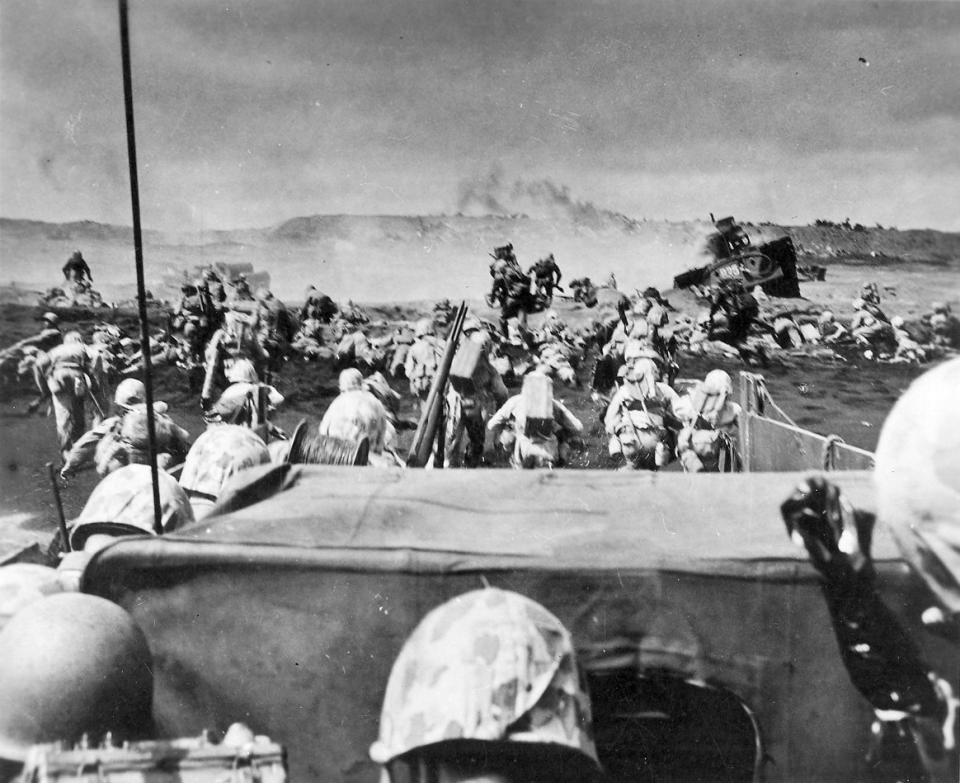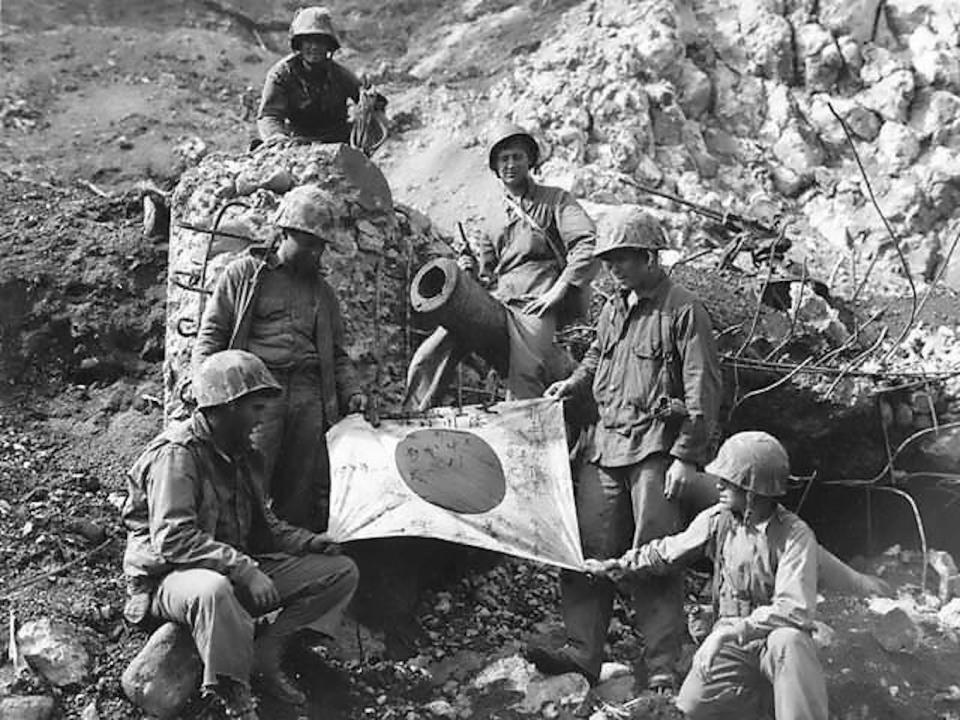How the US's massive bombardment of Iwo Jima during World War II made capturing the island from Japan even tougher

U.S. Marine Corps Photo
During the hell that was World War II, the US conducted 72 straight days of vicious bombing raids on the island of Iwo Jima to gain access. America did everything within their power to weaken Japanese forces before sending ground troops in to secure the rest of island for allied use.
Although US forces bombed the crap out of the island, one aspect of their strategy may have been overlooked in a big way.
Before the several weeks of the continued bombing, Japanese forces managed to construct well-fortified, underground structures that would withstand heavy American artillery.
Once the bombing ceased, Marines and sailors were given the green light to board amphibious transport vessels and head toward the enemy’s shores.

Wikimedia Commons
Navy ships, once again, pounded the shoreland, shooting over the Marines as they moved in to attack. Within minutes, thousands of ground troops hit the beachhead expecting the unexpected.
Once the Marines landed, their initial push was met with minimal pockets of small arms fire. The grunts believed the prior bombardment has killed off most of the Japanese.
But as they moved forward, the grunts would soon encounter the extreme consequences resulting from the weeks of intense bombardment.

US Army
Soon after the Marines moved further inland, the Japanese defenses came alive and launched a full counterattack.
Ground troops fought hard, day after day.
However, the intense allied bombings caused significant superficial damage to the island, littering the surface with debris.
This clutter helped to naturally conceal the Japanese pillboxes — small, concrete guard posts with small slits for weapon fire — making it extremely difficult for ground troops to locate and destroy them before it was too late.
Despite this clear disadvantage to the Marines, their fighting spirit proved superior as the grunts managed to secure the island of Iwo Jima.
NOW WATCH: Step aboard the USS Kearsarge, the US Navy workhorse that takes Marines to war
See Also:

 Yahoo Finance
Yahoo Finance 
